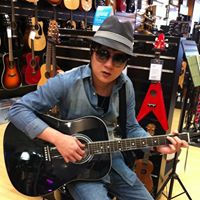Ben John Feng
age ~64
from Sudbury, MA
- Also known as:
-
- Ben J Feng
- Ben Jon Feng
- John Ben Feng
- Ben J Seng
- Benjamin J Feng
- Ben J Chang
- Bo Feng
- Feng Ben
- Feng Bj
- Phone and address:
-
32 Willis Rd, North Sudbury, MA 01776
(978)4430870
Ben Feng Phones & Addresses
- 32 Willis Rd, Sudbury, MA 01776 • (978)4430870
- 3151 Shamrock Ct, Ann Arbor, MI 48105 • (734)6628507
- Somerville, MA
- Boulder, CO
- Redmond, WA
- Irvine, CA
- San Jose, CA
Us Patents
-
Method And Apparatus For Determining Perceived Roughness Of Powertrain Sounds
view source -
US Patent:57745595, Jun 30, 1998
-
Filed:Feb 3, 1997
-
Appl. No.:8/790872
-
Inventors:Ben John Feng - Ann Arbor MI
-
Assignee:Ford Global Technologies, Inc. - Dearborn MI
-
International Classification:H04R 2900
-
US Classification:381 56
-
Abstract:A powertrain roughness model is based on a structure comprising an auditory filterbank for spectral decomposition of the powertrain sound signals into a set of critical bandwidth channels, a model for predicting the specific roughness in each critical band channel, and a critical band to wide band converter that combines the specific roughness in each channel into a single roughness value.
-
Sound Cancellation Using Microphone Projection
view source -
US Patent:20220208168, Jun 30, 2022
-
Filed:May 14, 2020
-
Appl. No.:17/611280
-
Inventors:- Framingham MA, US
Tyler White - Watertown MA, US
Ben J. Feng - Sudbury MA, US
Ankita D. Jain - Westborough MA, US -
Assignee:Bose Corporation - Framingham MA
-
International Classification:G10K 11/178
H04R 3/00 -
Abstract:Audio systems, methods, and computer readable mediums having program code to receive a harmonic signal related to rotating equipment, such as a vehicle drivetrain in some examples, and provide a harmonic cancellation (or enhancement) signal. The harmonic cancellation signal is transduced into an acoustic signal, and a feedback sensor, such as a microphone, detects an error signal representative of acoustic energy at a first location in the environment. A projection filter filters the error signal to provide an estimated error signal at a second location in the environment, such as at the location of an occupant's ear(s). An adaptive module adjusts the cancellation signal based on the estimated error signal.
-
Systems And Methods For Canceling Road Noise In A Microphone Signal
view source -
US Patent:20200391670, Dec 17, 2020
-
Filed:Jun 17, 2019
-
Appl. No.:16/443215
-
Inventors:- Framingham MA, US
Cristian M. Hera - Lancaster MA, US
Elie Bou Daher - Marlborough MA, US
Ben John Feng - Sudbury MA, US -
Assignee:Bose Corporation - Framingham MA
-
International Classification:B60R 11/02
H04R 3/04
H04R 1/08
H04R 1/22 -
Abstract:An audio system, including an accelerometer positioned to produce an accelerometer signal representative of road noise within a vehicle cabin; a microphone disposed within the vehicle cabin such that the microphone receives the road noise and produces a microphone signal having a road-noise component; and a road-noise canceler, comprising a road-noise cancellation filter, configured to receive the accelerometer signal and the microphone signal and to minimize the road-noise component of the microphone signal according to the accelerometer signal, to produce an estimated microphone signal.
-
Externally Ducted Vehicle Loudspeaker
view source -
US Patent:20190075392, Mar 7, 2019
-
Filed:Aug 30, 2018
-
Appl. No.:16/117080
-
Inventors:- Framingham MA, US
Ben John Feng - Sudbury MA, US -
International Classification:H04R 1/28
H04R 1/02 -
Abstract:Various implementations include vehicle loudspeakers and related vehicle audio systems. In some particular implementations, a loudspeaker for a vehicle includes: a transducer to radiate sound into an interior space of the vehicle; and an assembly coupled to a rear side of the transducer, the assembly including an enclosure and a passive radiator, the assembly disposed such that acoustic energy radiated from the rear side of the transducer passes through the enclosure and excites the passive radiator, causing the passive radiator to radiate acoustic energy to a region outside of the interior space of the vehicle, where a resonant frequency of the transducer is dependent on at least one characteristic of the passive radiator, and a resonant frequency of the enclosure is dependent on at least one characteristic of the enclosure.
-
Engine Sound Management
view source -
US Patent:20190047471, Feb 14, 2019
-
Filed:Oct 18, 2018
-
Appl. No.:16/164017
-
Inventors:- Framingham MA, US
Ben J. Feng - Sudbury MA, US -
Assignee:Bose Corporation - Framingham MA
-
International Classification:B60Q 9/00
H04R 1/22
H03G 9/00
H03G 5/16
B60Q 5/00
B60W 50/14
G10K 15/02 -
Abstract:In a vehicle equipped with a vehicle sound system, determining a virtual fixed gear ratio; determining a virtual RPM based on the virtual fixed gear ratio; generating a set of harmonic signals based on the virtual RPM, the harmonic signals being sine-wave signals proportional to harmonics of the virtual RPM; processing the harmonic signals to produce a set of processed harmonic signals; and in the vehicle sound system, transducing the processed harmonic signals to acoustic energy thereby to produce an engine sound within a passenger cabin of the vehicle.
-
Dynamic Engine Harmonic Enhancement Sound Stage
view source -
US Patent:20170034622, Feb 2, 2017
-
Filed:Oct 11, 2016
-
Appl. No.:15/290370
-
Inventors:- Framingham MA, US
Donald J. MacLellan - Hudson MA, US
Ben J. Feng - Sudbury MA, US -
Assignee:Bose Corporation - Framingham MA
-
International Classification:H04R 3/04
H04R 3/12 -
Abstract:A method to produce a dynamic sound stage for engine harmonic enhancement (EHE). Dynamic refers to the ability to position the sound stage at different positions as the engine operates at various RPMs and load. In order to control the sound stage width, a phase difference can be introduced between a first audio channel (e.g., a left audio channel) and second audio channel (e.g., a right audio channel). In the most general case, the phase difference can be introduced per harmonic per RPM. In this approach, the phase difference can be adjusted such that a vehicle occupant will perceive each harmonic signal to have a particular width. This width can be adjusted independently per RPM regions by tuning the per harmonic phase difference.
-
Acoustic Enclosure For Motor Vehicle
view source -
US Patent:20160332583, Nov 17, 2016
-
Filed:May 11, 2015
-
Appl. No.:14/708653
-
Inventors:- Framingham MA, US
Tobe Z. Barksdale - Bolton MA, US
Lee Prager - Berlin MA, US
Ben J. Feng - Sudbury MA, US -
International Classification:B60R 11/02
H04R 1/28
B29C 44/18 -
Abstract:A method of creating in situ an acoustic enclosure in a space that is between body panels of a motor vehicle, wherein the space defines an empty volume, the method comprising placing into the space between body panels a molding tool that comprises a solid barrier that divides the space between body panels into an interior portion on an inside of the molding tool and an exterior portion that is external to an outside of the molding tool, where the outside of the molding tool is exposed to the space between body panels, and while the molding tool is in the space between the panels, introducing a fluid material into the exterior portion of the space between the body panels, wherein the fluid material is configured to cure into a solid shell.
-
Engine Sound Management
view source -
US Patent:20160214532, Jul 28, 2016
-
Filed:Apr 6, 2016
-
Appl. No.:15/092202
-
Inventors:- Framingham MA, US
Ben J. Feng - Sudbury MA, US -
Assignee:Bose Corporation - Framingham MA
-
International Classification:B60Q 9/00
-
Abstract:In a vehicle equipped with a vehicle sound system, determining a virtual fixed gear ratio; determining a virtual RPM based on the virtual fixed gear ratio; generating a set of harmonic signals based on the virtual RPM, the harmonic signals being sine-wave signals proportional to harmonics of the virtual RPM; processing the harmonic signals to produce a set of processed harmonic signals; and in the vehicle sound system, transducing the processed harmonic signals to acoustic energy thereby to produce an engine sound within a passenger cabin of the vehicle.
Resumes

Ben Feng
view source
Ben Feng
view sourceLocation:
United States

Ben Feng
view sourceLocation:
United States
Flickr

Ben Feng
view source
Ben Feng
view source
Ben Feng
view source
Ben Siao Feng
view source
Ben Feng Hui
view source
Ben Feng
view source
Ben Feng
view source
Search Names Ben Feng
view sourceMyspace
Other Social Networks

Ben Feng Google+
view sourceNetwork:
GooglePlus
25 Jul 2011 Ben Feng's profile photo Ben Feng - Post date: 2011-07-11 - Public. ZF +1. MoreLoading. ...
Youtube
Googleplus

Ben Feng

Ben Feng

Ben Feng

Ben Feng

Ben Feng

Ben Feng

Ben Feng

Ben Feng
Plaxo

Ben Feng
view sourcegeneral partner at Paclink Capital Past: general partner at All Aisia Paatners, senior director at Amex, managing director at... I am general partner at Paclink Capital which is a venture capital firm from Taiwan. I am based in Shanghai.Paclink focuses on TMT,cleantech and auto related... I am general partner at Paclink Capital which is a venture capital firm from Taiwan. I am based in Shanghai.Paclink focuses on TMT,cleantech and auto related industries.
Get Report for Ben John Feng from Sudbury, MA, age ~64














